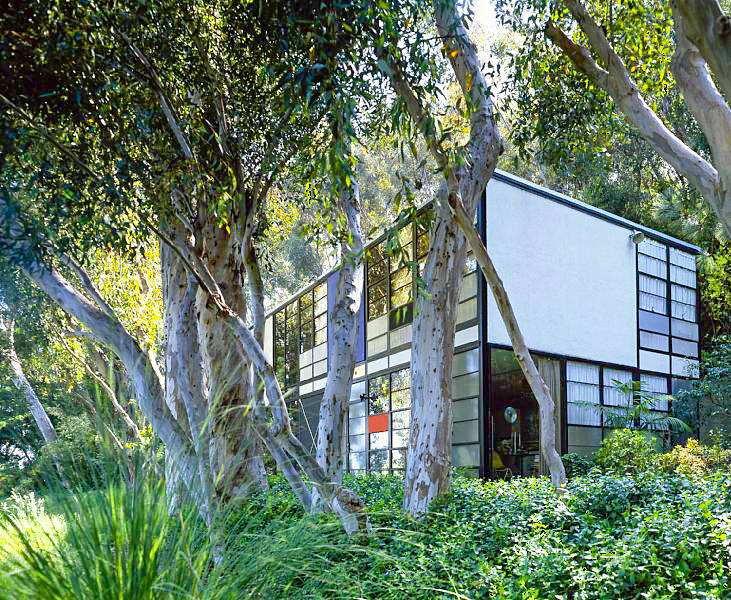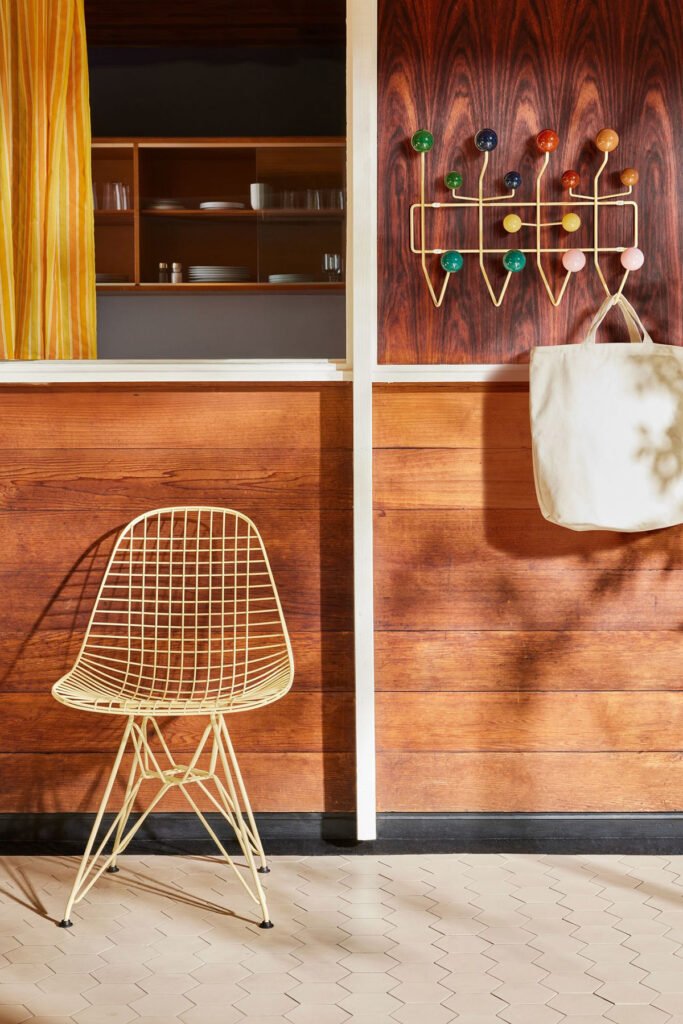Few names carry as a lot weight in American design historical past as Charles and Ray Eames. This husband-and-wife powerhouse remodeled Twentieth-century furnishings design by way of their progressive use of supplies, manufacturing processes, and their uncanny skill to mix performance with inventive imaginative and prescient.
Their work not solely outlined mid-century fashionable aesthetics however continues to affect modern furnishings creation at present. Listed here are essentially the most revolutionary Charles and Ray Eames designs that modified the panorama of American interiors perpetually.
1. The Eames Lounge Chair and Ottoman (1956)
Maybe their most recognizable creation, the Eames Lounge Chair and Ottoman represents the proper marriage of luxurious and performance. Impressed by the normal English membership chair, Charles and Ray wished to create one thing with “the nice and cozy receptive look of a well-used first baseman’s mitt.”
The molded plywood shell and supple leather-based upholstery created an immediately iconic silhouette that has been in steady manufacturing for over 65 years. Initially meant as a high-end reward merchandise, it has grow to be the quintessential image of subtle consolation and stays considered one of Herman Miller’s most coveted items.

2. Molded Plywood Chair (1946)
Nicknamed the “chair of the century” by TIME journal, the Molded Plywood Chair emerged from experiments the Eameses carried out of their residence. They used a selfmade “Kazam! machine” to bend plywood with warmth and stress.
The revolutionary three-dimensionally curved plywood shell conformed to the human physique, offering consolation with or with out upholstery. This breakthrough in supplies processing wasn’t simply aesthetically pleasing – it represented a brand new strategy to furnishings manufacturing that valued effectivity of supplies and ergonomics.


3. Eames Storage Unit (ESU) (1950)
The modular ESU system introduced modernist ideas to storage furnishings. With its uncovered structural parts and mixture of supplies (coloured panels, perforated steel, and wooden), the models embodied the Eameses’ philosophy that “particulars should not the small print. They make the design.”
These versatile items might be configured in numerous methods, anticipating at present’s modular storage options whereas bringing a pop of coloration and industrial aesthetics to mid-century houses.


4. Eames Plastic Chair (1950)
Initially designed for the Museum of Fashionable Artwork’s “Low-Value Furnishings Design” competitors, the Plastic Chair was the primary mass-produced plastic chair in America. The seamless, single-shell seat turned an instantaneous American basic and pioneered new manufacturing strategies for fiberglass-reinforced plastic.
Accessible with quite a lot of bases together with a rocking model and in numerous colours, these versatile chairs might be discovered in all places from trendy houses to varsities and workplaces, democratizing good design for the lots.


5. Wire Chair (1951)
With their Wire Chair, the Eameses explored yet one more materials – welded metal wire – making a sculptural, clear chair that performed with notions of visible mass and adverse area. The “Eiffel Tower” base (named for its resemblance to the well-known landmark) added architectural stability to what seemed to be an virtually weightless design.
This piece demonstrated their precept that “design particulars should not simply particulars – they make the product,” displaying how industrial supplies might be remodeled into one thing elegant and timeless.


6. Eames Home (Case Research Home #8) (1949)
The Eames Home in Pacific Palisades, California, represented their holistic strategy to design. Constructed from prefabricated supplies and customary industrial elements as a part of Arts & Structure journal’s Case Research Home Program, their private house embodied their design philosophy: most impact from minimal means.
The colourful panels, open inside areas, and integration with nature influenced numerous architects and inside designers in creating fashionable dwelling areas.


7. Aluminum Group Chairs (1958)
Initially designed for the Irwin Miller Home in Columbus, Indiana, the Aluminum Group represented a departure from the Eames’ shell chair designs. The progressive “floating” seat suspended between aluminum facet ribs created a taut, clear profile that labored equally effectively in workplace settings and houses.
The chairs’ versatility and luxury have made them enduring classics that also really feel modern greater than six many years later.


8. La Chaise (1948)
Although not put into manufacturing till many years after its design, La Chaise embodies the playful, sculptural strategy that made the Eameses so distinctive. Created for a MoMA competitors, this organically formed lounge piece was impressed by Gaston Lachaise’s “Floating Determine” sculpture.
Its flowing, sensuous kind anticipated future instructions in furnishings design and demonstrated the couple’s inventive imaginative and prescient past purely purposeful considerations. Lastly produced by Vitra in 1991, it stands as a testomony to their ahead-of-their-time design sensibilities.


9. Eames Hold-It-All (1953)
Even in designing one thing so simple as a coat rack, Charles and Ray introduced innovation and playfulness. The Hold-It-All, with its colourful picket balls on a wire body, took a utilitarian object and turned it right into a joyful assertion piece.
Initially designed for youngsters, its whimsical but purposeful design demonstrates how the Eameses approached each undertaking, from grand architectural commissions to humble home items, with the identical meticulous consideration to element and sense of enjoyment.


10. Tandem Sling Seating (1962)
Remodeling public area seating, the Eames Tandem Sling system can nonetheless be present in airports worldwide. The design brilliantly addressed the distinctive challenges of public seating: sturdiness, consolation for folks of various sizes, ease of upkeep, and the flexibility to configure areas effectively.
Its elegant aluminum body and replaceable vinyl slings created a system that was each sensible and visually cohesive with fashionable structure.


Ultimate Ideas on Charles and Ray Eames Designs
The Eameses believed that “design is a technique of motion,” not simply an aesthetic selection. Their furnishings items weren’t merely lovely objects; they represented new methods of eager about supplies, manufacturing, and the connection between kind and performance.
A long time later, their designs stay as recent and related as ever – a testomony to their revolutionary imaginative and prescient that perpetually modified how Individuals take into consideration design in on a regular basis life.
Learn subsequent:
